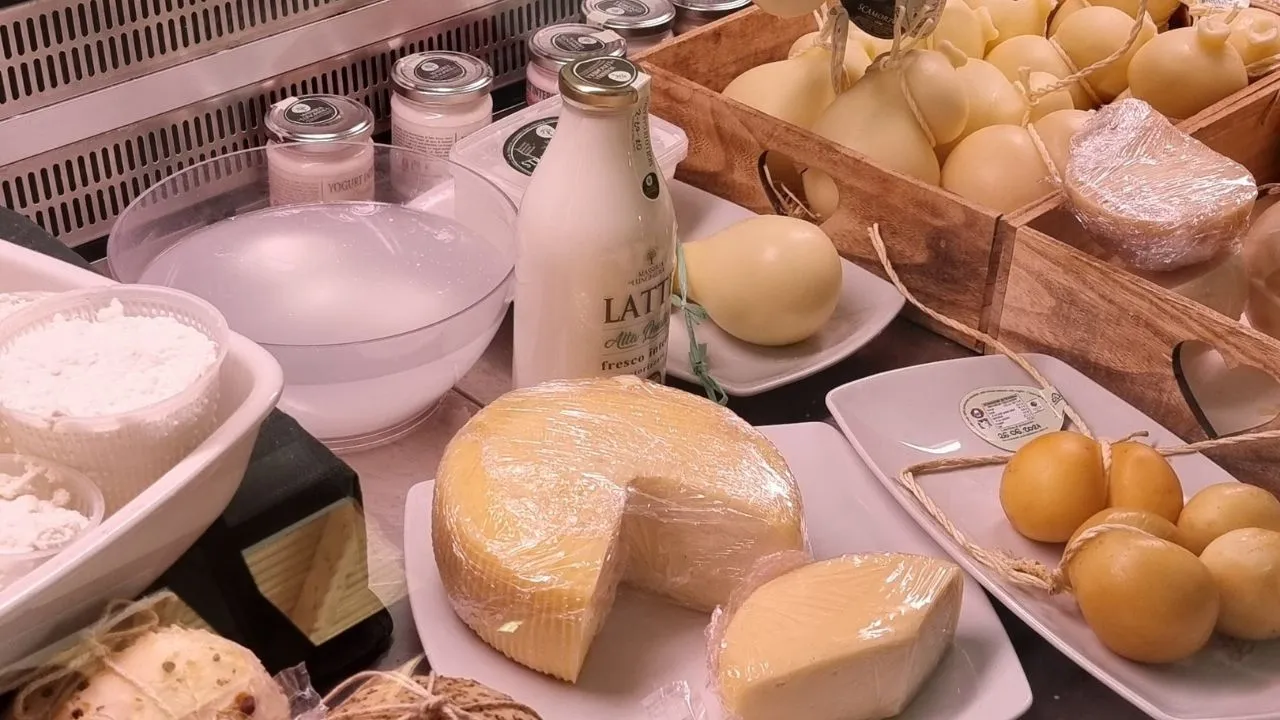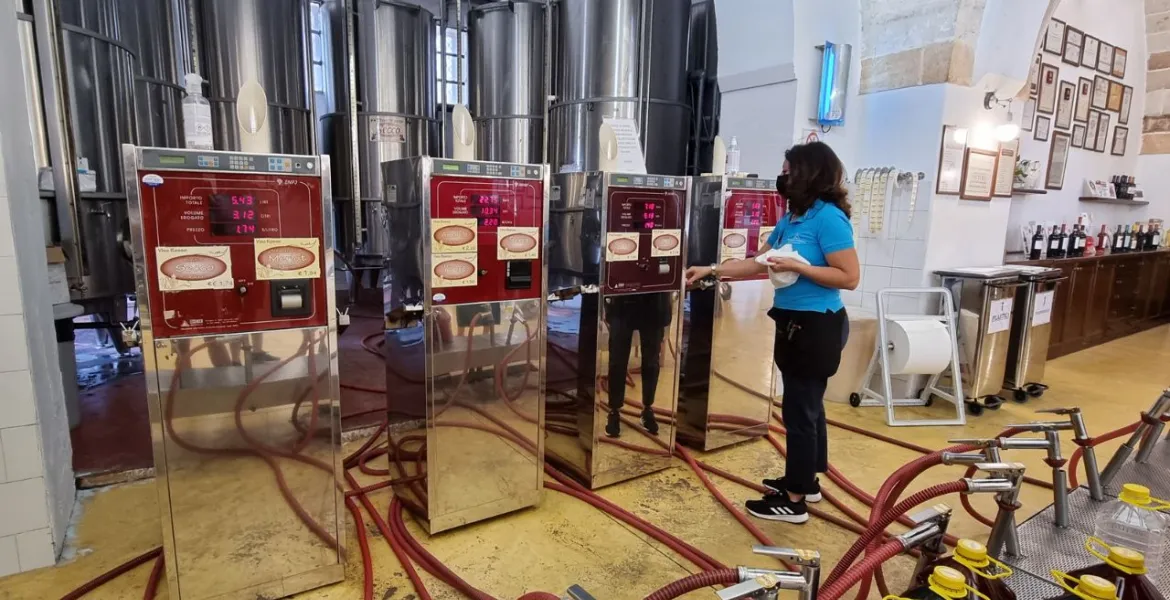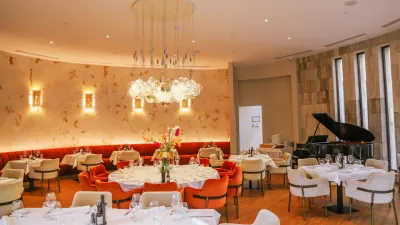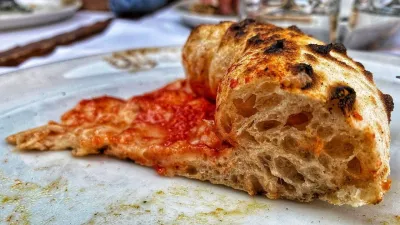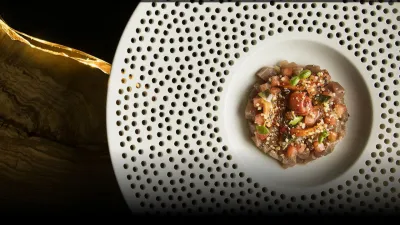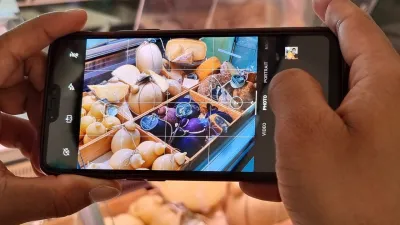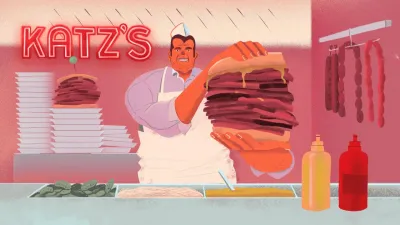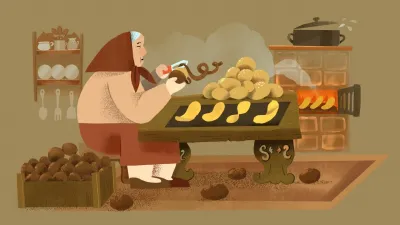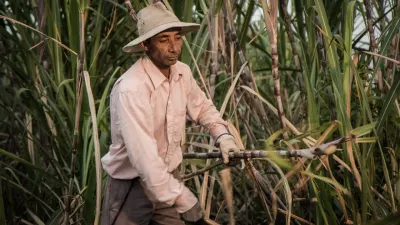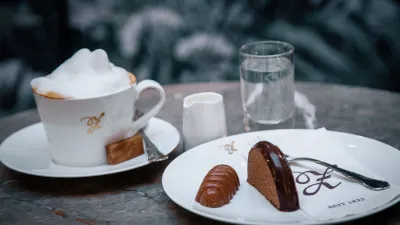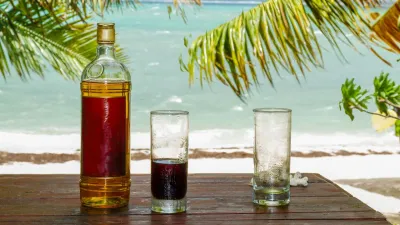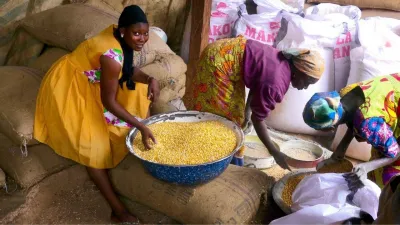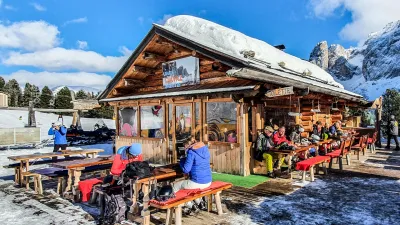Beaches reminiscent of the Caribbean, fantastic cuisine, and great wine—this and much more can be found in Puglia, a sunny, flat region in southern Italy.
Lovers of good cuisine must have a fondness for Italy; Italian cuisine is world-famous. And it's certainly not just about pizza. To think otherwise would be an insult to Italians. I recall the huge signs on the doors and windows of Italian restaurants in San Francisco's Italian Quarter: WE DO NOT SERVE PIZZA!!! It was very amusing, but I completely understood the outrage of the local chefs.
I love everything about Italy, including its unique diversity. There is no singular Italian cuisine. Each region boasts its own specific culinary identity. Nor is there a singular landscape. There is variety in the environment, variety in the people, and in their culture.
Come with us to sunny Puglia. It is a very popular destination for Czechs, especially because of the affordable direct flights from Prague to Bari. Puglia is quite flat, but very sunny, and thanks to its location, you can enjoy two seas: the Adriatic and the Ionian. However, if you spend all your time lounging on the beach, it would be a cardinal sin. Puglia is also famous for its cuisine, especially its seafood, often served raw. It might take a bit of courage to try such dishes, but once you do, you'll experience heavenly pleasure. But that's not all. Fish and seafood are eaten fresh and are therefore best enjoyed on the coast. If you attempt to order something like this inland, you will be duly referred to the coastal areas. Meat and cheese are more common in the center of the country. Perfect. Here you can understand why an Italian feels deprived of authentic gastronomy when outside of Italy.
Italy... Puglia is somewhat akin to Greece. A Greek settlement was founded in this area, on the coast of the Gulf of Taranto, in the late 8th century BC, and Greek culture permeated what is now Italy. This influence is still evident today, not only in the architecture but also in the local dialect, which is not easily understood by Italians from the north of the country. But let's leave history to the historians; you can study it yourself. Let's get down to the food!
Fish, Fish, Fish
Are you ready? Let's stay on the coast first. Enamored by the internet, we initially wanted to visit the cave restaurant in Polignano a Mare, but the locals advised against it, saying it was an expensive tourist trap that wasn't worth the quality. So we opted for (raw) seafood at Il Guazzetto, just a few steps away from the tourist bustle of the historic center of the beautiful medieval town of Monopoli. We had the immense advantage of being in a group, allowing us to order a variety of dishes and sample almost everything. Although we were initially hesitant to order a whole raw fish, our Italian friend Daniel convinced us, and it was the right decision. Not only was it a feast for the eyes, but none of us expected such a delicious taste. We immediately ordered another one. By the way, the old Monopoli center was in a bit of a predicament. The government had constructed a modern part of the city (with small "prefabs") nearby, where the vast majority of the population gradually relocated. Fortunately, the locals did not let the historic part of the city, founded by the Greeks, fall into complete ruin. They returned to the old town, gradually renovated most of the buildings, and today, many serve the needs of tourists either as hotels or for rent. By the way, while you're here, do visit the "new" part, which is not attractive, but you'll find the Cafè Blanco, a favorite among locals. Don't expect luxury, but excellent coffee, of course. Have it standing up at the counter. Firstly, you'll be like a proper Italian, and secondly, in most places, you'll save money and not pay for table service. Be mindful of this in Italy. The price at the counter can often differ from when you sit down in the restaurant. And if you want to be even more of a connoisseur, try an espressino freddo in the hot summer. You'll feel like you're in paradise.
Cheese
Everyone knows mozzarella, but do you know what stracciatella is? I don't mean the ice cream flavor. It's basically mozzarella shredded and dipped in cream. Then there's burrata, which is essentially stracciatella wrapped in mozzarella, or (as the Italians say) stracciatella in paradise. And that's exactly where you'll find yourself. We found ourselves at the farm (masseria) La Lunghiera in Putignano, where a workshop introduced us to the production of local cheeses, especially mozzarella, which we got to try our hand at making. Did you know that this cheese gets its name from the word mozzare, meaning to separate or tear off, from the way the individual pieces or loaves of cheese are torn from the mass?
Your interest will certainly be piqued by caciocavallo, literally horse cheese, which takes its elegant shape and interesting name from the way it was carried by ancestors on horses' sides, hanging over the horses' backs. At least that's how the local Italians explained it to us. However, you can read online that the name is generally thought to come from the fact that two pieces of cheese, joined by a rope, are hung to ripen on a 'cavallo' (horse), over a horizontal stick or branch. It is still ripened in this way today. In any case, we return to its Greek roots, as this cheese originated in ancient Greece, and records state that the history of caciocavallo dates back to 500 BC, when Hippocrates first mentioned the wisdom of the Greeks in making (this) cheese.
Wine
Have you ever filled up on wine? In Puglia, anything is possible. Nowhere else in the world have we seen anything like it. The locals arrive before the weekend with empty jerry cans to fill with wine at will, and at a very reasonable price, at least at the Produttori di Manduria winery. The typical wine of Puglia is Primitivo. You can taste it, for example, at the Coppi winery, where they offer a tour of the winery and vineyard along with a wonderful tasting, or at the aforementioned Produttori di Manduria. Let the locals teach you the difference between Primitivo from the west and Primitivo from the east. You may be familiar with red Primitivo, but did you know that there is also a rosé? Go and find out!
But if you don't have much time and can only visit one winery, drive all the way to Locorotondo (we know you'll go next door to Alberobello to see the trulli), and visit Marianna Cardone's Cardone winery. Hear her fascinating story. The combination of visiting the vineyard, hearing the owner's story, and tasting the divine wines is simply extraordinary. You will love Marianna and her wines forever.
The wine industry in Italy is not only struggling with a labor shortage here in Puglia. Young Italians are not keen on the work, so the vineyards are mostly tended by foreign workers, especially from Romania. Here in Puglia, moreover, winegrowers are contending with ever-increasing heat due to global warming. Marianna's vineyard is fortunately located right in the middle of Puglia, where winds from both (aforementioned) seas converge over the vineyard, giving the local soil a unique composition and enabling it to be one of the few not artificially irrigated. Rainfall is very rare and short. However, the aforementioned warming is starting to cause challenges for Marianna, and for the first time in the history of this family winery, they are considering artificial irrigation. Another problem for local wine is the price competition, especially from cheap prosecco, which has flooded the world. Adding to this is the fact that Apulian wines are (unfortunately) not well-known globally, leading to this great wine being sold at very low prices that are not sustainable. And it does not deserve this. Marianna is not the only local winemaker. Italian wine is increasingly being led by women, who founded the Associazione Nazionale Le Donne del Vino (National Association of Women in Wine, literally Women of Wine) in 1988, and are striving to make a difference: to improve conditions, make winemaking and local wine more attractive, and promote fair prices. We're cheering them on! You can taste Marianna's wines at L'Arco dei Tipici, for example, and if you're interested, you can also enjoy an olive oil tasting.
Pasta
Typical Apulian pasta is uniquely shaped like little ears and is called orecchiette, literally "little ears." Orecchiette is made with durum flour (there is no equivalent for this flour in the Czech context, but the most suitable is wheat semolina flour with the OO marking) and water; eggs are rarely used. They are best served with tomato sauce and stracciatella on top.
Sweets
Do you enjoy breakfast? The Italian breakfast is fundamentally sweet. Forget bacon, beans, and sausages. In Italy, it's all about coffee and something sweet. Here, it's likely a pistachio cornetto—a croissant filled with pistachio cream. Just try one and see for yourself. Words cannot do it justice.
If you like the taste of Amaretto, try the specialty of the region—'alla Leccese' (also known as 'alla Salentina')—iced coffee with almond syrup. You'll be hard-pressed to find this delicacy elsewhere. Use it as an excuse to visit Lecce, a city known as the Florence of the Baroque. Indeed, the flourishing architecture of this city is unparalleled anywhere in southern Italy. The Greeks, who founded the city, left their mark here, as did the Romans, the Normans, the Saracens, the Swabians, and the Spanish Habsburgs. You will also find buildings in the Baroque style, especially by Giuseppe Zimbalo, decorated with ornamental elements made of local limestone, called Lecce Baroque. If you dislike the taste of almond (Amaretto) (as I do), skip this experience. By the way, speaking of coffee, cappuccino is only drinkable until the eleventh hour. After that, it's an absolute faux pas. Although in Italy, they've grown accustomed to tourists, and in this century, they are no longer fazed by it.
Street Food
There's no such thing as street food. Probably the best street food you could never imagine is in Damare, in the historic center of Monopoli. Super fast, but also super good. The steak tartare and pasta here would put many a posh Prague restaurant to shame. By the way, we stumbled upon Marianna's wine here, so for us, a visit to this fast-food place was definitely not as quick as we originally intended.
If you find yourself in the south and are persuaded by us to sample the raw bounty of the sea, Otranto would be a very suitable destination. There are small fishmongers, bistros, and restaurants on every corner, and you can take your food to go and enjoy the view of the sea. We can recommend, for example, Acmet Pasicià or La Polperia.
For the Finicky Ones
Puglia is often considered a poorer region, but even here, we can find luxurious and expensive restaurants. The Michelin Guide Italia lists 56 of them in Puglia. That's impressive for a region known for "peasant cuisine," as Puglia is often referred to. But we maintain that there is beauty in simplicity, and so Puglia has captivated us.
If, despite all the gourmet delights, you find time to relax on the beach, feel free to venture a little further afield to Caribbean-like beaches such as Baia dei Turchi, Torre del 'Orso, or Punta Prosciutto, or join the locals at one of the many charming mini coves. And if you're after something completely unique, head to the rock town of Matera. You won't regret it.
Special thanks to Daniele Toniola, with whose Hike & Meat, Cook & Meet, the author was able to experience Puglia in a completely different way than the average tourist.
The author is a foreign correspondent for VisitChef.com

